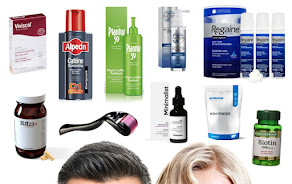As temperatures drop and the festive season approaches, many people begin to notice something frustrating: their hair starts shedding more than usual.
If you’re seeing extra strands on your pillow, increased shedding in the shower, or a general loss of fullness in November–January, you’re not imagining it — winter hair loss is a real, well-documented phenomenon.
Cold weather, indoor heating, lifestyle changes, and seasonal stress all play a role. Here’s why hair gets thinner in winter, what triggers this seasonal shedding, and how you can protect your hair before holiday events and celebrations.
❄️ Does Winter Really Make Hair Loss Worse?
Yes — winter is one of the peak shedding periods of the year.
The combination of cold, dry air outside and warm, dehydrating indoor heating can disrupt the balance of your scalp and hair follicles, leading to increased shedding.
Winter also coincides with:
-
Stress (festive season + end-of-year pressure)
-
Lower vitamin D levels
-
Weaker circulation
-
Poorer diet
-
More heat styling
-
Reduced humidity
All of which can impact the hair growth cycle.
❄️ Why Hair Loss Increases in Winter
1. Dry Scalp and Reduced Moisture
Cold air holds less moisture, and indoor heating strips hydration even further.
The result: a dry, flaky, irritated scalp, which can weaken the hair follicle and cause more strands to fall out.
2. Poor Circulation in Colder Weather
When temperatures drop, blood flow is redirected toward your core organs to keep you warm.
This means reduced circulation to the scalp, resulting in weaker follicle activity.
3. Lower Vitamin D Levels
Shorter days = less sunlight = lower vitamin D.
Vitamin D plays a crucial role in hair growth cycle regulation, so deficiencies during winter commonly trigger seasonal shedding.
4. Increased Stress and Fatigue
Winter is packed with:
-
Festive events
-
Financial pressure
-
Work deadlines
-
Family demands
-
Emotional load
This can raise cortisol levels and trigger telogen effluvium, a form of stress-related shedding.
5. Holiday Diet Changes
During the festive months, many people eat:
-
Less protein
-
More sugar
-
More alcohol
-
Irregular meals
Hair health depends heavily on nutrient consistency — especially iron, zinc, B vitamins, and protein.
6. More Heat Styling
From holiday parties to New Year’s celebrations, heat tools come out more frequently, increasing breakage and making hair appear thinner.
🎄 How to Prevent Winter Hair Loss Before the Festive Season
1. Boost Scalp Hydration
Your scalp needs moisture just as much as your skin.
Try:
-
Hydrating shampoos & conditioners
-
Lightweight scalp oils or serums
-
Avoiding harsh cleansers
-
Using a humidifier indoors
A well-hydrated scalp = stronger, more resilient hair.
2. Increase Your Winter Nutrient Support
Since winter reduces sunlight and affects dietary consistency, focus on micronutrients essential for hair growth:
-
Vitamin D
-
Iron / Ferritin
-
Zinc
-
Biotin
-
B Vitamins
-
Protein
-
Omega-3 fatty acids
Many people add a hair-specific supplement during winter to help compensate for seasonal deficiencies.
A number of women and men use multi-ingredient supplements like HR23+ during winter because it supports the hair growth cycle and helps counteract shedding triggered by stress, low sunlight, and poor nutrition.
3. Protect Your Hair From Heat Damage
Winter + heat tools = breakage.
Try:
-
Heat protectant sprays
-
Lower temperature settings
-
Fewer styling sessions
-
Looser festive hairstyles
Even small styling adjustments can reduce winter thinning.
4. Keep the Scalp Warm
Wearing hats outdoors protects the scalp from harsh cold and prevents circulation dips.
Choose loose-fitting, soft fabrics to avoid friction damage.
5. Support Healthy Circulation
Healthy circulation fuels hair growth.
Try:
-
Scalp massage
-
Light exercise
-
Warm showers
-
Microneedling (optional and only if trained)
Improved blood flow helps maintain follicle activity.
6. Reduce Seasonal Stress
The emotional load of the festive period can significantly impact hair.
To reduce winter-related shedding:
-
Practice mindfulness or breathing exercises
-
Keep a realistic to-do list
-
Take breaks from social overload
-
Prioritise sleep (7–9 hours)
You’ll feel better — and your hair will thank you.
🎁 Is Winter Hair Loss Permanent?
No — winter shedding is usually temporary.
Most people see:
-
Shedding peak between November and February
-
Regrowth between March and June
As long as the follicles remain active, seasonal hair loss reverses naturally.
But if shedding continues beyond winter, other factors may be involved, such as:
-
Low iron
-
Thyroid imbalance
-
PCOS
-
Androgenetic thinning
-
Postpartum changes
In that case, further investigation is recommended.
⭐ Final Thoughts
Winter can be harsh on your hair, but seasonal shedding doesn’t have to ruin your confidence before festive gatherings.
By supporting your scalp, maintaining nutrition, managing stress, and staying consistent with your routine, you can significantly reduce shedding and encourage healthier, stronger growth throughout the colder months.
With a little seasonal care — and, for some, the added support of a targeted hair supplement like HR23+ — your hair can stay full, resilient, and holiday-ready.

















